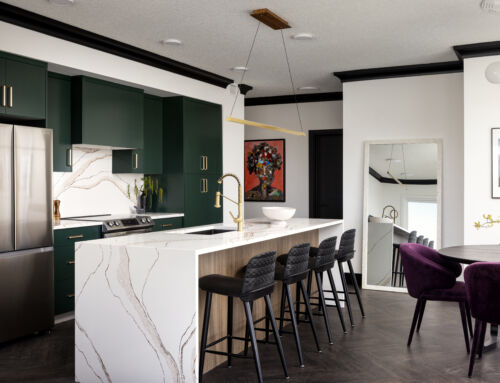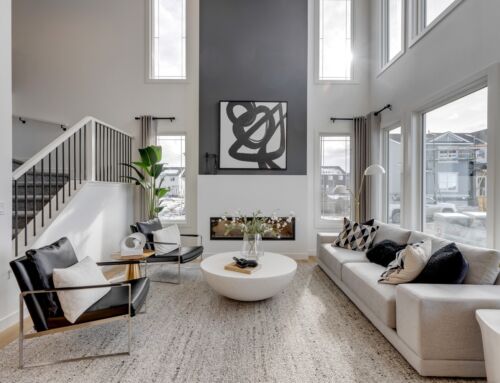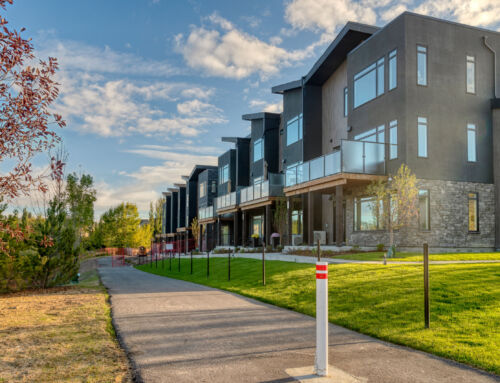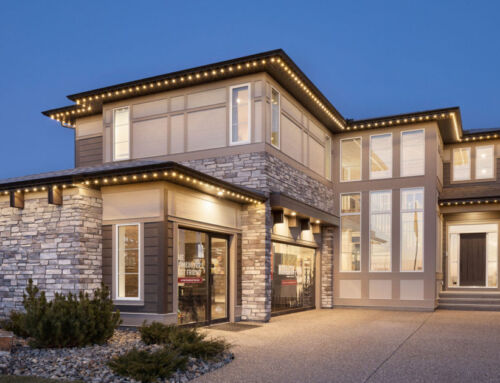Above: Axess at Currie is one of many multi-family developments built with a rainscreen system
Water damage prevention is not usually the first thing someone thinks about when they purchase a new home.
Kitchens, bedroom sizes, and ensuites likely lead the purchaser’s list of priorities instead.
Nonetheless, Slokker Homes has made this beneath-the-surface potential one of its priorities.
The veteran builder has a self-proclaimed passion for a complex method that mitigates this concern.
Slokker uses a rainscreen system on its condo developments in the Calgary and Edmonton areas.
Peter Paauw, president of Slokker Homes, is steadfast this methodology makes a difference.
“I refuse to build without it,” says Paauw.
Rainscreens are designed to slow the momentum of horizontal, wind-driven water.
The system uses an air cavity that sits behind the building envelope, allowing the moisture to drain and evaporate.
Paauw says condos are like a sail with a pinhole that can take on water through pressure from the wind.
“Historically, this was not at issue because of the use of tar paper and cement cracks,” Paauw says.
“Tar paper is relatively dry so you know whatever is on the tar paper would be separated through the cracks,” he adds.
The role of the air cavity is two-prong. The first being that it reduces pressure on the entry point.
“If it rains, the pressure will be high but the flow will be low,” Paauw says. “So, if there is a little air cavity behind the envelope, the amount of wind coming through it will be low. That will reduce the amount of vapour going through the hole.
“Secondly, the little air pocket will allow whatever moisture that is there to dry up without doing any further damage.”
The building envelope is a term used to describe the exterior walls, windows, subfloor, exterior doors, and roof as a whole.
The quality of a building envelope is measured by its ability to withstand outdoor elements, such as wind pressure, bulk water, and the sun’s effect on the home.
“I would say, apart from water leaks from your plumbing inside the building, the second biggest cause of special assessments is based on envelope failure,” says Paauw.
Paauw does not pretend that rainscreen systems are cutting-edge, joking “I think they were around before Roman times.”
Several reports, in fact, point to the emergence of this concept in the late 1940s.
Prevalence of rainscreens tends to vary from country-to-country, says Paauw, adding that while they aren’t required, he feels they should be incorporated in the building code to offer an enhanced level of protection.
Within the residential construction industry, there have been many advancements in single and multifamily housing in response to the need for better efficiency and performance.
“With more choices in exterior finishes and claddings than ever before, several good approaches to ensuring building performance are available,” says Peter Gogich, manager of claims assessment for the Alberta New Home Warranty Program.
“Using the principle of a rainscreen system and incorporating it into the exterior wall detail is known to provide enhanced protection against the elements and is fully endorsed by the Program.”
”I think when you build a product, you want to drive by it 10, 15 years later, and say that I built it and built it right,” Paauw says.
Slokker isn’t done there.
The builder is continually investigating and developing ways in which to improve.
Its latest focus is on curbing the risk of water leaks.
“We know the increase in insurance cost is substantially driven by (the potential for) water damage,” Paauw says. “Failures inside the condo building are a big source of insurance claims.”
“We are studying what we can do to substantially lower that risk.”
Slokker is presently exploring water pressure drop alarms, a technology used in single-family homes that Paauw says may make sense for multi-family developments, as well.
Slokker is a long-time member of the Alberta New Home Warranty Program, which Paauw says has delivered the builder “a lot of value,” adding “I really enjoy working with the Program.”
As a continual learner, he particularly appreciates ANHWP’s “affiliation with the education portion of the industry, which I think is great.”
ANWHP’s subsidiary, the Professional Home Builders Institute, has been providing practical education and training for people in the residential industry since 1987.







Connect